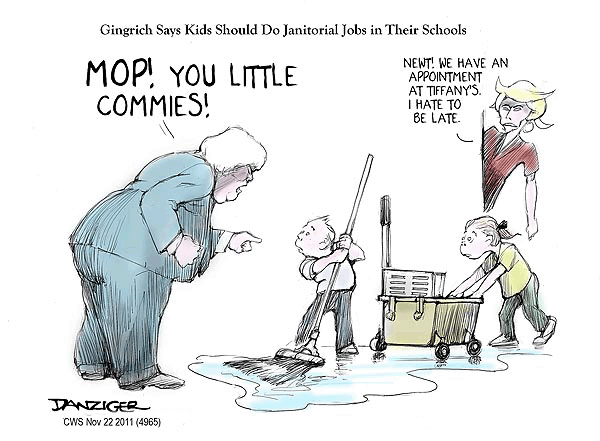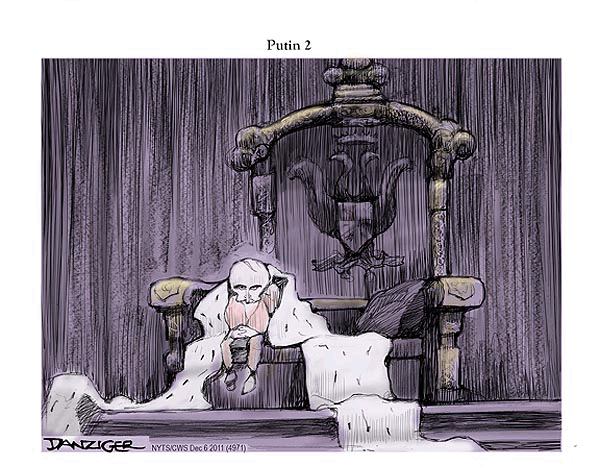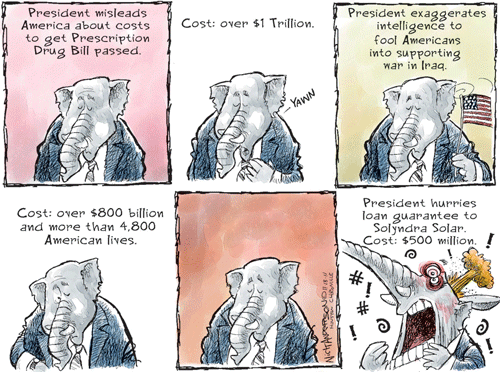Debt is the major problem facing the world economy at the moment. But it's not as clear cut as many commentators make out. The recent focus has rightly been on Europe and on the sovereign (public) debt crisis. (See here and here and here and here for earlier posts on debt).
For Australia there are two types of debt to worry about directly and another type indirectly. Indirectly Australians need to worry about the reactions of European and American policy-makers to their public debt problems.
As many commentators have recently pointed out, contractionary fiscal policy in a time of economic stagnation, fear and credit anxiety is likely to lead to - surprise, surprise - contraction. To think otherwise is slightly ridiculous. The real question is whether the decline in the price of sovereign debt is worth more to getting the economy back on track than attempting to support growth with limited fiscal resources.
Directly, Australians need to worry about their own foreign and household debt. Both are private forms of debt and are of course related. Households have borrowed from the banks, who have sourced some of their funding from overseas lenders. The balance of offshore borrowing by the banks has improved since 2007, but it is still very important as the banks keep telling us when they decide not to pass on the full weight of RBA interest rate cuts.
A post from Leith van Onselen covers the possible negative impact of rising household debt for younger Australians.
In an article I wrote a couple of months ago I considered three structural changes that were affecting the Australian political economy.
The first structural change is the long-running shift away from manufacturing towards services and the more recent revitalisation of the mining sector. This has come, to some extent, at the expense of manufacturing and important service industries such as tourism and international education.
As a matter of interest, the third structural change causing anxiety in the community is a tentative shift towards a less pollution-intensive economy through the establishment of a carbon price and support for renewable energy through a variety of schemes and policies.
For Australia there are two types of debt to worry about directly and another type indirectly. Indirectly Australians need to worry about the reactions of European and American policy-makers to their public debt problems.
As many commentators have recently pointed out, contractionary fiscal policy in a time of economic stagnation, fear and credit anxiety is likely to lead to - surprise, surprise - contraction. To think otherwise is slightly ridiculous. The real question is whether the decline in the price of sovereign debt is worth more to getting the economy back on track than attempting to support growth with limited fiscal resources.
Directly, Australians need to worry about their own foreign and household debt. Both are private forms of debt and are of course related. Households have borrowed from the banks, who have sourced some of their funding from overseas lenders. The balance of offshore borrowing by the banks has improved since 2007, but it is still very important as the banks keep telling us when they decide not to pass on the full weight of RBA interest rate cuts.
A post from Leith van Onselen covers the possible negative impact of rising household debt for younger Australians.
Last week, the Reserve Bank of Australia’s (RBA) Bulletin noted how high housing costs are disproportionately affecting younger Australians:
Median housing debt-to-income ratio for Australians under 39 years of age has risen 29 per cent in the six-year period to June 2010, compared to the 20 per cent rise for the oldest Australians in the same time.
The increases leave younger Australians with a median housing debt of 333 per cent of household income or more than double the 159 per cent for the over-60 crowd…
“The increase in the cost of housing has affected younger households, whether renters or purchasers, more than other age groups”, said the report…Now the Galaxy Australian Debt Study has found that younger Australians are more stressed about repaying debt than any other generation:
People aged between 24 and 35 topped the debt anxiety list, with nine in 10 concerned about making debt repayments.
Big purchases such as a first home were largely to blame for the stress, with 55 per cent of people in this age group nominating rising rents and mortgage repayments as their biggest financial concern, according to the Galaxy Australian Debt Study…
“While most Australians are trying to be financially responsible, it is worrying that people aged 25 to 34 appear to be feeling the greatest strain,” Matthew Strassberg, senior adviser at Veda, the debt investigation company which conducted the survey.
The survey also found 15 per cent of people in this age group were likely to apply for more credit over the next six months, compared with 9 per cent in the remainder of the population.
This is where it can all go wrong, Mr Strassberg said.
“It is concerning that there are people struggling with their current debt levels but are turning to more credit as the answer, potentially edging closer to a debt spiral,” he said.
“While people can have large credit commitments, the debt spiral begins when a person starts slipping behind on payments and seeks yet more credit as the solution.”
The bi-annual Galaxy survey reveals Australians are facing unprecedented levels of debt stress as 82 per cent of the population worry about meeting debt repayments, up from 75 per cent in September 2010…
The research also suggested one in five Australians were struggling to pay off their credit commitments.
The phenomenon of high debt and the consequent need toAs a means of coping with the stress of debt, 87 per cent of consumers have chosen to cut back on everyday spending and lifestyle, 49 per cent have cut back on groceries and 35 per cent received assistance from family or friends…That more people are worried about repaying debt now than in September 2010 is interesting given that the official ratio of household debt to disposable income has fallen over the past year, from 154% in September 2010 to 151% in September 2011. Perhaps the reasons for the rising anxiety levels have to do with:
“Borrowing from family and friends is common, so is wanting to access superannuation early.
With the baby boomers starting to retire, and needing to liquidate their housing assets to fund retirement (remember: they own roughly half of Australia’s housing assets, including 57% of all investment properties), the question beckons: will younger Australians be in the position to buy these homes from the boomers at current prices?
- Housing prices falling. 90% of household debt relates to mortgages. And with home prices now falling, households are losing the ability to simply sell-up, repay outstanding debt, and walk away.
- The economic (employment) outlook is far less certain, owing to the slowing domestic economy (outside of mining) and overseas concerns (including Europe and China).
From the above studies, the answer is doubtful.
In an article I wrote a couple of months ago I considered three structural changes that were affecting the Australian political economy.
The first structural change is the long-running shift away from manufacturing towards services and the more recent revitalisation of the mining sector. This has come, to some extent, at the expense of manufacturing and important service industries such as tourism and international education.
The second structural change - and the one I'm focused on in this post - is the shift away from debt-financed consumption and rising housing prices to a higher rate of saving – generally considered under the description deleveraging or more simply the paying off or consolidation of debt.
Perhaps we should call this the end of an earlier structural change that began with financial liberalisation and gathered pace as credit markets expanded over the 1990s and kept going until 2007 when the music stopped and not everyone found a chair. The growth of household debt as a percentage of disposable income grew rapidly over the 1990s and 2000s rising from:
48% in September 1990 to 156.7% in June 2007 to 150.8% in September 2011.
Debt for housing is 89.7 % of total household debt.
Interest payments as a percentage of disposable income reached a high of 13.4% in June 2008 to a low of 9.3% in June 2009 to 11.4% in September 2011.(see Structural Shenanigans for graphics)Investor housing debt is 29% of total household debt.
So ... household debt remains at high levels and the inability to continue to grow debt even further undermines an important source of growth over the past 20 years.
Think about it.
The growth that occurred after the recovery of the 1990s recession was augmented, buttressed and sometimes driven by the expansion of household debt by around 100% of disposable income.
If we were to have the same favourable conditions over coming years this would mean that household debt as a percentage of disposable income would have to go to 250% of income.
If we were to have the same favourable conditions over coming years this would mean that household debt as a percentage of disposable income would have to go to 250% of income.
The question I often ask myself at times like Christmas is how much debt could I get into. Now not owning a house means that this would probably be unproductive debt spent on expensive dinners and wine and presents.
But regardless of what I spent it on, at some point the debt burden becomes too much to service and I either have to pay it off, reschedule it or declare bankruptcy. Extrapolate this task across households across the economy and you can see why a major source of growth has at best stabilised and at worst gone into reverse.
But regardless of what I spent it on, at some point the debt burden becomes too much to service and I either have to pay it off, reschedule it or declare bankruptcy. Extrapolate this task across households across the economy and you can see why a major source of growth has at best stabilised and at worst gone into reverse.
This is the change that may matter most of all for Australia in 2012 as households save more and the "paradox of thrift" exacerbate the impacts from overseas.
People start to feel pessimistic about their spending capacities and if growth slows further then we could end up in a negative spiral.
Another reason why people are feeling pessimistic is that the value of assets has fallen significantly since 2007-08.
The fall in the share market may matter more in Australia than elsewhere because more Australians have their super invested in shares than anywhere else.
The fall in the share market may matter more in Australia than elsewhere because more Australians have their super invested in shares than anywhere else.
As a matter of interest, the third structural change causing anxiety in the community is a tentative shift towards a less pollution-intensive economy through the establishment of a carbon price and support for renewable energy through a variety of schemes and policies.
The first two structural changes are long-running and largely unavoidable without significant and perhaps costly policy interventions, which could cause more problems than they fix.
The third involves a greater level of immediate political choice. But government has the ability to encourage a shift towards a more diversified, future oriented economic structure.
And though policy change associated with this is likely to have only a minor impact in the short-term, the way that debate has polarised the community has added to negative perceptions of the Gillard government.
Next year should be an interesting year. But just as problems could occur it's also possible that Europe will sort out its mess, China will gradually begin to shift from high investment to higher consumption. If the Communists can manage the Chinese economy through another period of global crisis then maybe everything will be hunky dory in 2012.
Let's hope that those focused on vulnerabilities and negative spirals (like me) are wrong and the boomers are right for at least one more year.






























































